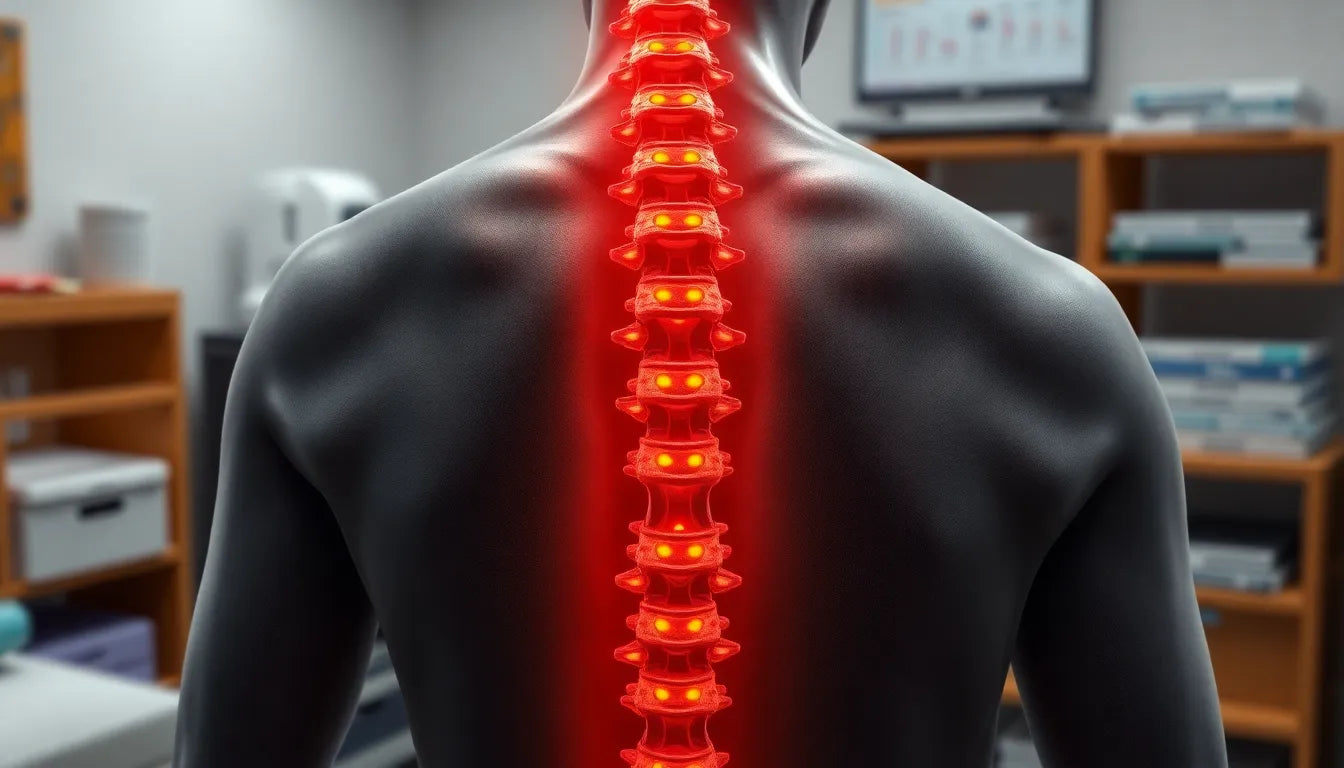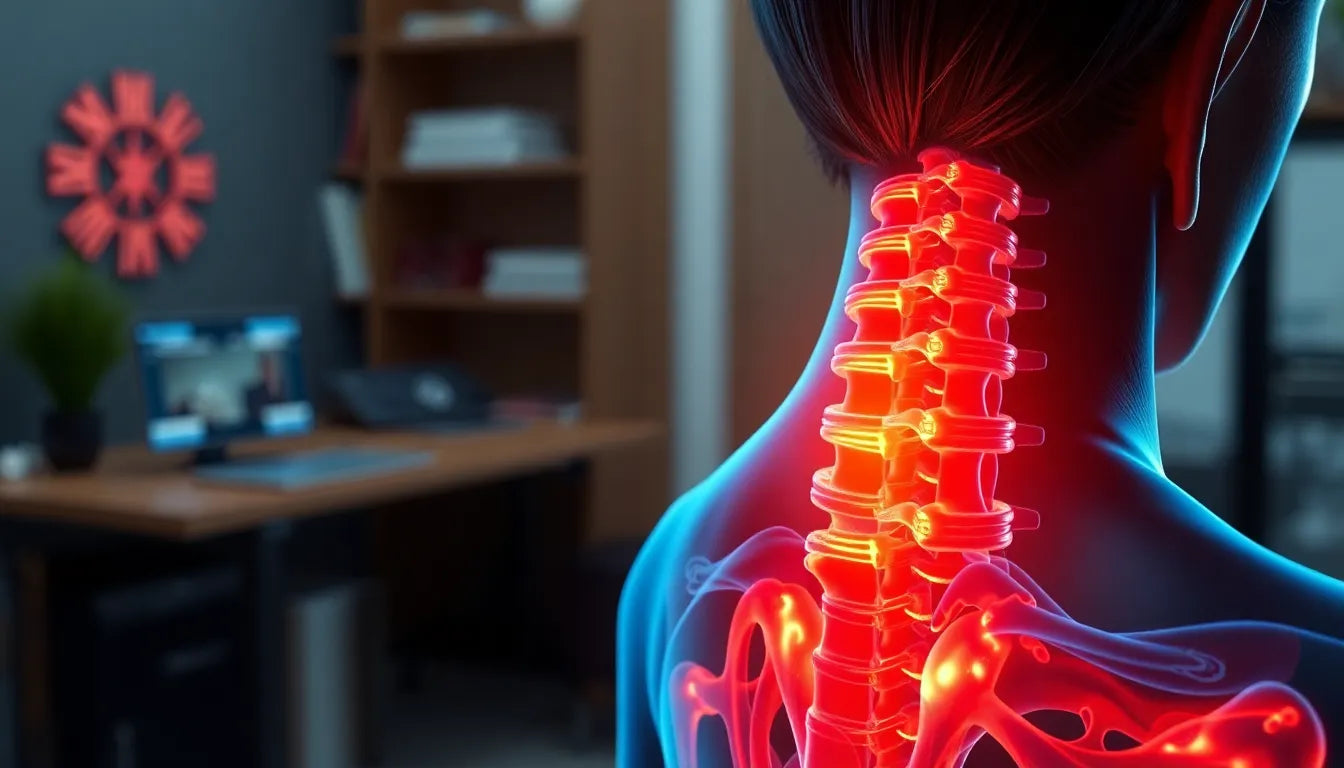Living with a herniated disc can be a challenging experience, especially when it comes to getting a good night's sleep. A herniated disc occurs when the soft center of a spinal disc pushes through a crack in the tougher exterior casing. This condition often leads to discomfort and pain, particularly during sleep, which can significantly affect rest quality and overall well-being. Individuals suffering from a herniated disc may find themselves tossing and turning, struggling to find a comfortable position that doesn't exacerbate their symptoms.
the significance of proper sleep positioning
Finding the right sleeping positions is crucial for those dealing with a herniated disc. Proper sleep positioning can help alleviate pain by reducing pressure on the spine, which not only promotes better sleep but also aids in the healing process. Specific positions can help maintain the natural curvature of the spine, distribute weight evenly, and minimize stress on the affected areas. This can lead to a more restorative sleep experience, allowing the body to recover and function optimally during waking hours.
objective of the post
This blog post aims to provide readers with effective sleeping positions and strategies to improve sleep quality when dealing with a herniated disc. By exploring various positions and their benefits, individuals can discover ways to minimize discomfort and enhance their sleep environment. The goal is to empower those with herniated discs to make informed decisions about their sleep habits, ultimately leading to better rest and improved quality of life.
optimal sleeping positions for herniated disc relief
back sleeping for spinal comfort
One of the most recommended positions for those suffering from a herniated disc is sleeping on the back. This position helps maintain a neutral spine alignment, which is crucial for reducing pressure on the herniated discs. By keeping the spine in its natural curve, back sleeping minimizes stress and allows for better muscle relaxation.
To enhance the benefits of back sleeping, consider using small pillows under the knees and lower back. This added support helps maintain the spine's natural curvature and ensures even weight distribution, further reducing discomfort. The result is a position that not only minimizes spinal stress but also promotes overall relaxation, making it easier to fall asleep and stay asleep throughout the night.
side sleeping with a supportive twist
Side sleeping can also be beneficial for individuals with a herniated disc, provided certain modifications are made. Proper spinal alignment is key, and this can be achieved by placing a pillow between the knees. This simple adjustment helps maintain the spine's alignment and reduces pressure on the lower back.
For those who prefer a more curled-up position, the fetal position can offer additional relief. By pulling the knees toward the chest, this variation helps open up the joints and reduce spinal bending. It's important to choose the non-painful side to lie on, and placing a rolled-up towel between the waist and mattress can provide extra support, ensuring a comfortable and restful sleep.
embracing the fetal position for joint relief
The fetal position is often highlighted as one of the best sleeping positions for herniated disc relief. This position reduces spinal bending and helps open up the joints, offering significant comfort. To achieve the fetal position effectively, lie on your side and gently pull your knees toward your chest. This posture not only alleviates pressure on the spine but also promotes a sense of security and relaxation, making it easier to drift into a deep sleep.
less common recommendations for improved sleep
stomach sleeping with modifications
While typically not recommended for those with a herniated disc, stomach sleeping can be made more comfortable with certain adjustments. Using a thin pillow or forgoing a pillow altogether can help prevent neck strain. This position should be approached with caution and only if it feels comfortable, as it can sometimes exacerbate symptoms if not executed properly.
reclining position for alternative comfort
For individuals who find traditional sleeping positions uncomfortable, adopting a reclining position can be a viable alternative. Elevating the head and shoulders with supportive pillows or using an adjustable bed can help reduce pressure on the spine. This position is particularly beneficial for those who experience difficulty breathing or find lying flat uncomfortable. By supporting the upper body, the reclining position can provide relief and promote a more restful sleep experience.
Incorporating these recommended sleeping positions into your nightly routine can significantly improve sleep quality and reduce discomfort associated with a herniated disc. By experimenting with different positions and making necessary adjustments, you can find the optimal sleeping posture that suits your needs, ensuring a more comfortable and restorative night's sleep.
complementary strategies for enhanced sleep
While finding the right sleeping position is crucial for alleviating discomfort from a herniated disc, incorporating complementary strategies can further enhance sleep quality. One of the first steps is selecting an appropriate mattress and pillow. A medium-firm mattress often provides the best support, helping to maintain spinal alignment while reducing pressure points. Memory foam or latex mattresses are popular choices due to their ability to contour to the body, providing personalized support. Similarly, ergonomic pillows that support the natural curve of the neck can prevent additional strain and promote a more comfortable sleep posture.
In addition to mattress and pillow selection, establishing a pre-sleep routine can be beneficial. Engaging in gentle stretching exercises before bed can help relax tense muscles and improve flexibility, making it easier to settle into a comfortable sleeping position. Relaxation techniques such as deep breathing, meditation, or a warm bath can also prepare the mind and body for restful sleep, reducing the impact of pain on sleep onset and quality.
frequently asked questions
What is the best sleeping position for a herniated disc?
The most recommended sleeping positions for a herniated disc are back sleeping and side sleeping with modifications. Back sleeping helps maintain a neutral spine alignment, reducing pressure on the discs, while side sleeping with a pillow between the knees ensures proper spinal alignment and reduces lower back pressure.
Can I sleep on my stomach with a herniated disc?
While stomach sleeping is generally not advised for those with a herniated disc, it can be modified to reduce discomfort. Using a thin pillow or no pillow at all can help prevent neck strain. However, it is crucial to listen to your body and avoid positions that exacerbate pain.
How can I improve my sleep quality with a herniated disc?
Improving sleep quality involves a combination of choosing suitable sleeping positions, selecting the right mattress and pillows, and incorporating pre-sleep routines. Gentle stretching and relaxation techniques can help relax the body and mind, making it easier to achieve restful sleep.
Will my sleeping position need to change as my condition improves?
As your condition improves, you may find that certain sleeping positions become more comfortable or that adjustments are needed. It's important to reassess your comfort levels and consult with a healthcare professional to ensure your sleeping posture continues to support your recovery.
Are there specific products that can help with sleeping better with a herniated disc?
Yes, there are several ergonomic products designed to assist with herniated disc relief during sleep. Memory foam mattresses, contour pillows, and adjustable beds can provide the necessary support and comfort. Additionally, lumbar support cushions and knee pillows can help maintain proper alignment and reduce strain.
By integrating these strategies and addressing common concerns, individuals with a herniated disc can significantly enhance their sleep quality, leading to better rest and overall well-being. Experimenting with different approaches and making informed choices about sleep habits and products can empower you to achieve a more comfortable and restorative night's sleep.


















